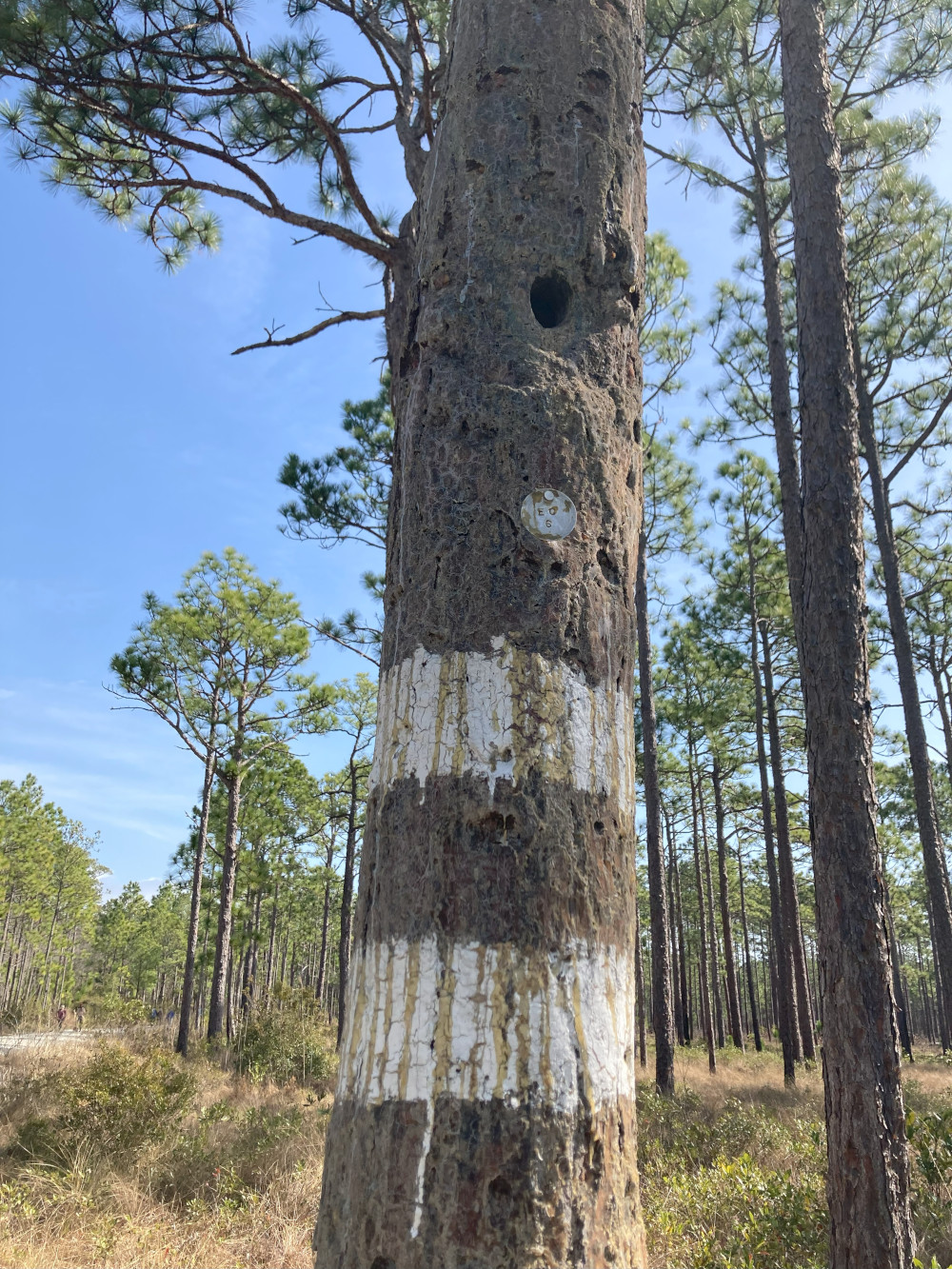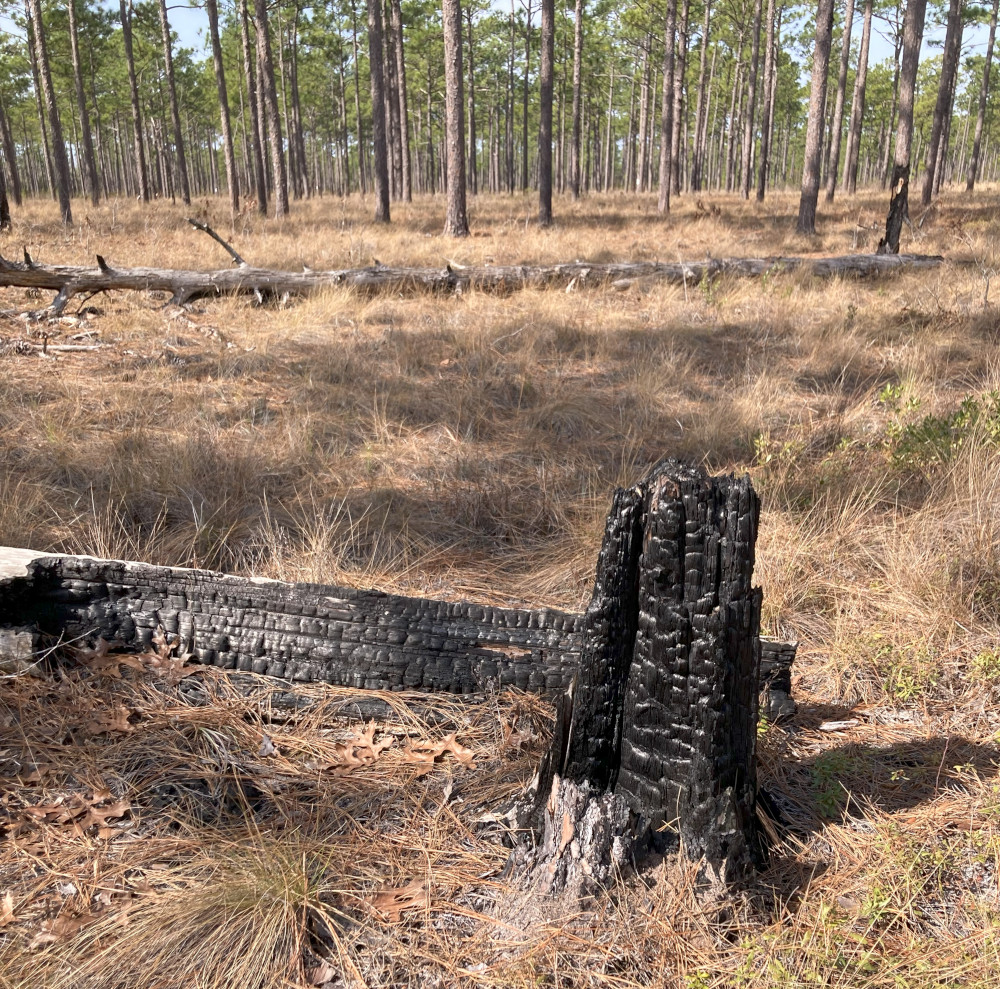For decades I observed the paradox. The landscape around the coastal North Carolina home where my parents retired was being developed at a rate that I have never seen anywhere. Yet right across a frenetic, four-lane state highway from my parents’ house sat a 63,000-acre state refuge — a little gem of native habitat supporting a longleaf pine savanna and a unique wetland called pocosin or Carolina bay.
The Holly Shelter Game Lands are home to many species, including Venus flytraps (Dionaea muscipula) and red-cockaded woodpeckers (Leuconotopicus borealis), a bird first listed as endangered in 1970 under a precursor to the federal 1973 Endangered Species Act.
When developers wedged a Dollar General between the game lands and the highway a few years ago, I trusted the Endangered Species Act to protect the red-cockaded woodpeckers living nearby.
Then, in October 2024, the U.S. Fish and Wildlife Service announced that it had “downlisted” the red-cockaded woodpecker from “endangered” to “threatened” — still at risk, but in better shape thanks to ongoing conservation efforts.
That’s typically considered good news, but when I heard it, my heart sank. I could see the vise tightening on the red-cockaded woodpeckers of the Holly Shelter Game Lands.
Each time I visited North Carolina, acres of longleaf pines (Pinus palustris) had disappeared. Some were replaced by the looming piles of dirt that would become a highway bypass, meant to ease traffic and speed commuters between two of the state’s biggest cities, Wilmington and Jacksonville. Other acres of trees gave way to massive apartment complexes that turn their bland backs to the highway.
How could the species not need more protection than ever?
An Unpopular Bird
When I first told my parents, years ago, that their neighbors included a federally endangered species, the red-cockaded woodpecker, my dad waved his hand dismissively toward the birdfeeders in their backyard.
“Those woodpeckers are everywhere,” he said.
He wasn’t alone in that sentiment. In the 1990s a lot of people in North Carolina thought there were entirely too many red-cockaded woodpeckers around. The birds were, in some peoples’ minds, preventing development and logging on private property.
“They called it the woodpecker wars,” says Jeff Walters, a biology professor at Virginia Tech and a leading expert on red-cockaded woodpeckers. Rumor had it that property owners were killing the birds to avoid having their land tied up by conservation.
Peace came in 1995 with a new federal policy, the Safe Harbor Program, which allows voluntary agreements between the Fish and Wildlife Service and private landowners. The landowner promises to improve habitat for federally endangered species, and the government promises not to increase restrictions on the land, even if the population of endangered species grows.
Today they are called Conservation Benefit Agreements, and while they were created in North Carolina for red-cockaded woodpeckers, the popular program is used for many species across the country. “Even in Guam,” a U.S. territory in the Pacific Ocean, Walters says.
But even with this program, the woodpeckers continued to suffer and decline.
For Want of a Tree
Longleaf pine forests once blanketed over 90 million acres in the southeastern United States, from eastern Texas to southern Virginia, according to the U.S. Department of Agriculture’s Natural Resource Conservation Service. This was the red-cockaded woodpecker’s empire.
Red-cockaded woodpeckers depend on longleaf pines and on a specific habitat — the longleaf pine savanna. They will build cavities in other species of pine, but they strongly prefer longleaf.
The woodpecker relies on the specific biology of the longleaf pine. It’s the only woodpecker to build cavities in living trees. The longleaf pine’s susceptibility to red heart disease, a fungus that rots a tree’s inner wood, makes it easier for the birds to carve out their homes.
Red-cockaded woodpeckers also depend on the longleaf pine forest’s unique ecosystem, which relies on frequent, low-intensity fires and lacks a midstory, that layer of trees in between the shrubby ground cover and the soaring pines themselves.
With these requirements met, the woodpeckers are resilient and thrive even on military bases. “I’ve seen a bird fall off a tree in the middle of artillery training. It just flew back up, not bothered at all,” Walters says.
But European settlers started cutting down longleaf pine forests almost as soon as they landed. Cut-down forests were replanted with faster-growing pine species. Longleaf pine seeds couldn’t sprout when wildfires were suppressed. The birds declined with the forests, and by 2006 longleaf pine forests had hit a low of just 3 million acres — about a 97% decline over their historic numbers.

Today longleaf pine savannas are one of the nation’s most endangered ecosystems, but conservation efforts across the Southeast have boosted the extent of longleaf pine forests to over 5 million acres, according to the Natural Resource Conservation Service. That increase is a success story — but it represents a mere splinter of the forest’s former glory.
Meet the Neighbors
I wanted to meet my parents’ threatened neighbors, so on a warm, sunny Saturday in February, I walked down a dirt road in the Holly Shelter Game Lands looking for them.
David Allen, a wildlife biologist who spent his entire professional career working with red-cockaded woodpeckers, including 28 years with the North Carolina Wildlife Commission, had given me a complicated plan that guaranteed a sighting.
But finding a red-cockaded woodpecker proved much simpler than Allen’s plan: I just looked around when I heard a gentle tapping.
As I walked along the road, I could see where the game lands staff had painted broad, white stripes on trees with woodpecker cavities. I kept walking and heard faint tapping. I could see a black-and-white woodpecker clinging to a pine trunk. But had I found the right bird?
Red-cockaded woodpeckers look a lot like their relatives, hairy woodpeckers (L. villosus), who are common and found all over North America. Both are robin-sized, have black wings with white spots and a white belly. The red-cockaded woodpecker’s belly has black spots. Allen told me to focus in on a woodpecker’s “cheeks” to tell them apart, looking for the broad white patch on a red-cockaded woodpecker’s head, compared to the two thin white stripes on the hairy woodpecker.
Focusing my binoculars on the correct pine trunk in a forest of identical pine trunks was the most difficult part. Then I located it. This bird’s cheek had a broad white patch.
Red-cockaded woodpeckers are average-looking, but their behavior is exceptional. They raise their chicks in family groups — mostly brothers, but also sisters — helping to guard the nest, keep the eggs warm, and bring food to the chicks.
This is rare among birds. Walters says the acorn woodpecker, a western species, does something similar. Crows also raise their young in family groups.
Red-cockaded woodpeckers drill sap wells around future and current nest cavities. It can take anywhere from several months to over a decade to get the dripping pine sap just the way they like it. The sticky sap protects the chicks inside from snakes.

As I walked through Holly Shelter, I saw lots of small, round cavities in trees. The helper birds roost in those holes. Two holes were surrounded by greenish-gray sap — potential nest cavities.
“Breeding territories are a patriarchy,” Walters says. Sons hang around to inherit a good, sappy nest cavity from their fathers. Sometimes a nest cavity may be started by a grandfather and first used by a grandson.
The combination of family breeding and multigenerational construction could make for telenovela-worthy drama, but on that warm February day, the bird was just theatrically flicking a piece of bark off the tree now and then as it searched for insects.
I looked for a long time. Then, with a flash of dark wings, the woodpecker was gone.
The Downlisting
Walters, who was an academic advisor on the Species Status Assessment that provided the scientific foundation for the downlisting of the red-cockaded woodpecker from endangered to threatened, believes the downlisting is warranted.
“We found that most populations, about 75%, have increased,” he tells me.
Holly Shelter is in the smaller group of populations that haven’t grown, he adds.
Why are red-cockaded woodpecker populations thriving in some areas and struggling in others? “It comes down to forest management,” Walters says.
A healthy forest for these woodpeckers starts with prescribed fire: intentionally set, controlled burns made by trained land managers. By preventing the midstory trees from growing, managers encourage red-cockaded woodpeckers to stick around. Without fire they tend to abandon an area.

Walters says populations also tend to increase when wildlife managers create artificial nest cavities in appropriate habitat near existing family groups.
The Holly Shelter staff does both these things, says Alexander Parker, North Carolina Wildlife Commission’s species and habitat biologist for the site.
The federal government has provided most of the funding for this work. And it’s unclear, between the downlisting and executive branch spending cuts, what will happen with this funding in the future.
While Walters remains confident about the downlisting, the data included in the status assessment acknowledges that most red-cockaded woodpecker populations are small and have not reached their recovery targets.
Even the official announcement of the downlisting in the Federal Register said, “The current status of red-cockaded woodpecker partially meets the 2003 downlisting criteria.”
Partially? I emailed the Fish and Wildlife Service’s red-cockaded woodpecker recovery coordinator, John Doresky, for clarification. But I wasn’t allowed to speak with him, and I didn’t receive specific answers to my emailed questions.
The people at the Southern Environmental Law Center have some theories about the downlisting. An investigation by SELC and Defenders of Wildlife found documentation of a regional Fish and Wildlife quota to downlist, delist or not list 30 species a year as a “wildly important goal.”
“That cast a shadow over the proposal to downlist the species,” says Elizabeth Rasheed, a North Carolina-based staff attorney at SELC.
It’s bad news for the entire region, since the Southeast is one of the most biodiverse places on the planet.
When the downlisting was proposed in 2020, in the waning days of the first Trump administration, SELC wanted to make sure it didn’t go too far. Rasheed says, “SELC was most concerned about the loss of protections against killing, harassing or otherwise harming the birds — by cutting down nesting trees, for example.” At the time the Trump administration had removed that protection for species classified as “threatened” under the Endangered Species Act.
SELC and other conservation organizations asked for these protections in their comments to the federal agency. When the woodpecker was officially downlisted in the waning days of the Biden administration, specific protections against harm were indeed added, even though the Biden administration had also restored the protections for all species listed as threatened.
Because the protections were specifically written into the downlisting, those protections will continue to protect red-cockaded woodpeckers even if, as Rasheed and others expect, the Trump administration removes protections from threatened species yet again.
There Goes the Neighborhood
There are at least two towns in North Carolina where red-cockaded woodpeckers live among people’s homes, but my parents’ town isn’t known to be one of them. With the downlisting, federal funding woes, and the local construction boom, I wanted to believe my dad when he said that “those woodpeckers are everywhere” in his housing development. In the face of so many threats, I hoped that red-cockaded woodpeckers could survive even in a place with streets, lawns, and houses.
But I also didn’t trust my father’s birding skills; he’s limited to the species that are also baseball team mascots. So we looked at photos. He pointed to a picture of a dark, crow-sized woodpecker with a bright red mohawk — a pileated woodpecker, a common backyard bird. I wonder how many of them were killed in the woodpecker wars.
Allen told me that even for the people who live among red-cockaded woodpeckers, 90% of the small woodpeckers in their yards are the common ones — hairy and downy woodpeckers, and sapsuckers.
Still, I stick by my idea of my parents’ neighborhood as a harbinger of the birds’ fate. This busy little corner of the North Carolina coast, with its road construction and boxy apartment complexes, is not exceptional. U.S. Census Bureau figures show that the Southeast — the red-cockaded woodpecker’s former empire — is the nation’s fastest-growing region. It’s not just the Holly Shelter red-cockaded woodpeckers who are being squeezed.
I’m concerned about that squeeze because I’ve learned that the conservation success of the red-cockaded woodpecker is delicate. It relies on things that are no longer certain, such as federal funding for prescribed fires. Also, nearly half of all red-cockaded woodpeckers live in national forests. An April 4 order targets national forests for timber cutting, even overriding endangered species protections — another uncertainty.
The future is tenuous for all of us, not just woodpeckers with a unique lifestyle. A red-cockaded woodpecker once picked itself up off the ground after being shaken off a tree by artillery fire. That kind of resilience is valuable, no matter what your conservation status or your species.
Previously in The Revelator:
What 70 Celebrity Tortoises Can Teach Us About Conservation Stories




